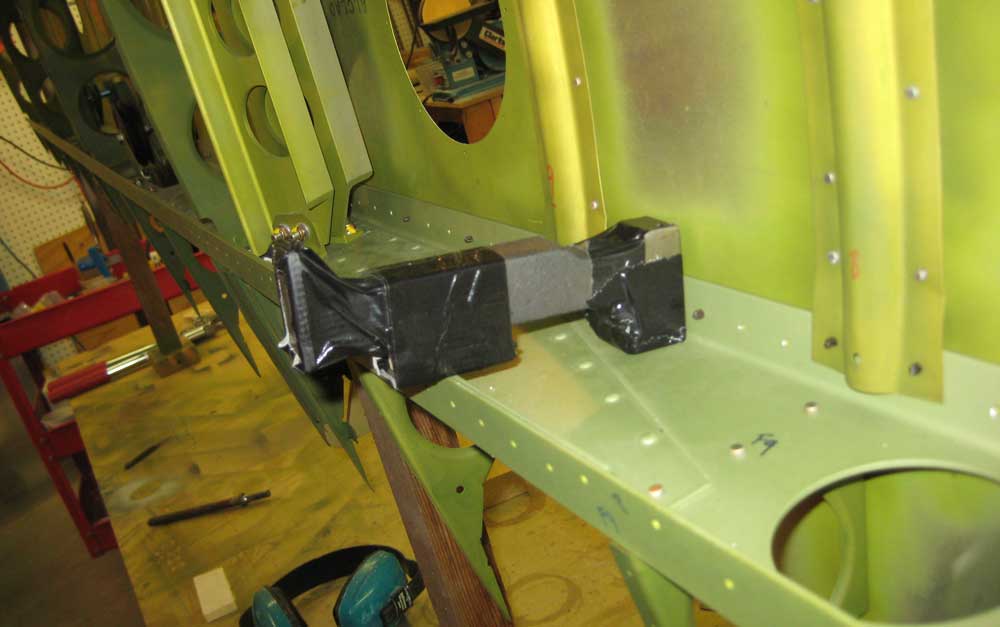Most amateur builders think that riveting is just “plain riveting.” You put the rivet in the hole, press the rivet against the metal with the gun and a proper set, back up the butt end with a bar, and blast away until the upset head looks good and go on to the next one. You will note that each rivet head you drive this way sits in a depression. The natural thought is that the squeezing action of the rivet causes this to happen and that every rivet will normally look this way.
In reality, it is the hammering of the rivet gun that causes this depression around every rivet. The thinner the metal, the deeper the depression. When you work with heavier metal, it is stiff enough to stay flat when it is vibrated, and you do not have to give the job so much special consideration. Not so with the thin GlaStar® skins. Riveting the metal skins on the GlaStar requires a little different approach.
Here is how to set the rivets and keep the skin flat. First, the two pieces of metal must touch. If the skin must be pushed together by downward pressure on the rivet gun, a depression will result no matter how the operation is done. Parts do not always fit perfectly, so you will have spots where the skin will draw down and leave a depression. There is no real fix for this unless you install a shim or re-form the lower part to bring it against the skin.
However, where the parts lay together, there is no need to have a depression around each rivet head caused by the hammering action of the rivet gun. First, use a bucking bar that is heavy enough for the job. First thought is that little rivets need little bars. Not so. The lighter the bar, the more hammering will be required to form the bucked head. The less hammering, the easier it is on the skin.
Control your air pressure with a flow regulator at the gun inlet. This regulates pressure by restricting flow. You can readjust instantly and find the best setting for the size of the rivet, thickness of the metal and weight of the rivet set. Note that longer sets require more air pressure because they are heavier and thus soak up more of the gun’s hammering energy.
So let’s rivet! Place the rivet set and gun on the rivet with moderate pressure. Place the selected bar on the tail of the rivet and press until the rivet head is just pushed away from the skin. Maintain this bar pressure. Increase pressure with the gun hand just enough to re-seat the rivet head on the skin. Give the rivet a short burst. This will swell the rivet into the hole, lock the sheets of metal together and start to form a shop head.
Now maintain the gun pressure but increase the bar pressure and rivet the bucked head to spec. This procedure keeps the riveting pressure focused on the rivet and off the metal. This will leave the skin flat with the base of the rivet head sitting flat on the skin. With a little practice, you will find this an easy procedure, and you’ll be proud of the overall appearance of your riveting job.

P.S.: It is hard to go home and rivet on your GlaStar after you have watched Chip Beck roar by in his Glasair at the Copperstate Fly-In! But if your engine quit, you would probably be a lot happier in a GlaStar ! We enjoyed meeting the S-H team in Mesa.



